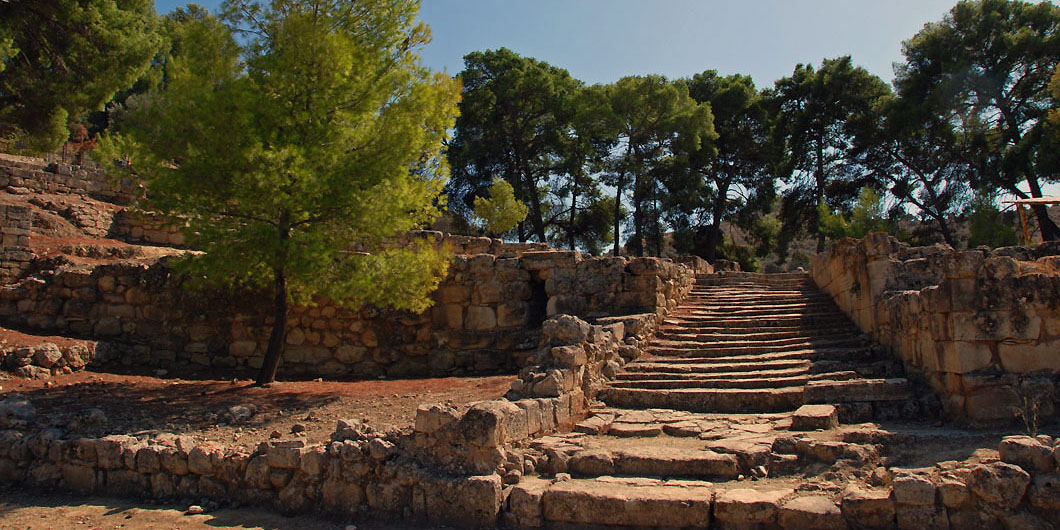The archaeological site of Agia Triada is one of the most remarkable in Crete. It is located 3 kilometres south of Phaistos, on the edge of the river Geropotamos, in a landscape of exceptional natural beauty.

The location was first inhabited in the Prepalatial period (3300-2000 BC), however it flourished during the Neopalatial period (1750-1490 BC), when a palace was founded there. It was smaller than the other Minoan palace complexes, yet veryimpressive, luxurious and elegant. The so-called Minoan Royal Villa (also known as littlepalace) was built circa 1600 BC. It is believed that it was used as a summer residence by the king of Phaistos. According to another opinion, it may have been used as a main palace, together with that of Phaistos, or following its destruction. After 1400 BC, when the palace complexes of Knossós and Phaistos were destroyed for the second time, the Royal Villa of Agia Triada was also destroyed, apparently by the same cause.
A megaron of the Mycenaean type was constructed in its place. An agora (marketplace, used as a place of assembly) with a long stoa(covered, colonnaded walk) was built east of it, as well as shops and other megara.
The splendour of the Late Helladic III buildings leads to the conclusion that the administrative centre of western Messara in those years must have been transferred to Agia Triada.
In the Geometric period, the Royal Villa was not used as a residence; considering the votive offerings of statuettes and small clay animals that were found on the site, it probably served as a shrine. During the Hellenistic years, a small sanctuary, dedicated to Zeus Belchanos, was founded, and the town stretched east of the magaron.
The Minoan palace complex at Agia Triada consisted of two L-shaped wings.
It was not as large as those of Phaistos and Knossos, however it had all the characteristics of palatial architecture, and it stood out for its luxury and impressive decoration.

It featured rooms with pier-and-door partitions (polythyra), stairwells, light wells, balconies, paved courtyards, covered colonnaded areas, storeroom complexes and treasuries. The walls were covered with so many frescoes that their number exceeded all frescoes of Minoan Crete counted together.
The archaeological finds from the palace of Agia Triada were numerous and remarkable: ceramics of exceptional craftsmanship and decoration, a very noteworthy archive of Linear B tablets, three stone-carved vases (the so-called Chieftain’s cup, the Boxer vase, the Harvester vase), nine copper ingots (talanto = ancient unit of weight and money), a large number of sealings, and of course the well-known sarcophagus of Agia Triada stand out among them.
A town of the Neopalatial years was unearthed next to the palace. A square with a square-shaped pillar colonnade and a marketplace, as well as a town of the Late Helladic III period, with large, megaron-style houses, were built in its place.















